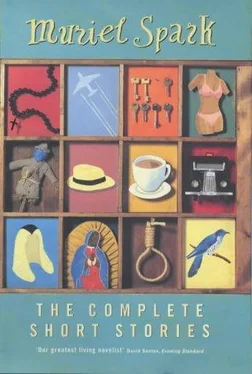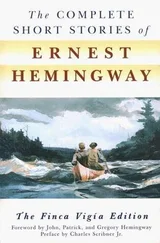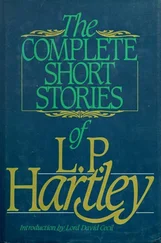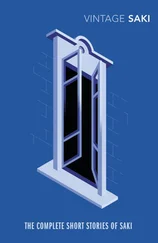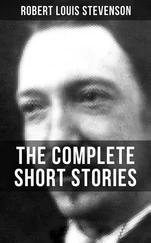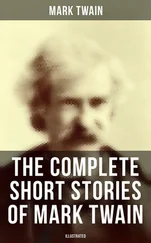I made my grandmother a dress she was proud of to the day she died. It was velvet lined with silk, every inside-seam edged with narrow lace, both dress and lining. Nobody could see how beautifully it was finished inside. I have always stitched lace to my inside seams. Even if nobody ever saw the reverse side, my clients were the sort of women who are satisfied with the knowledge that they are beautifully dressed in garments made by hand and edged inside with very narrow lace, even when a silk lining hides the whip-stitched lace-edged seams. Hem-stitch, back-stitch, cross-stitch, slip-stitch, buttonhole-stitch — I can do them to perfection. No sewing machine has ever stood in my workshop. You might say it was my obsession to turn out a hand-made dress. My clients would say, ‘Do you mean that you even do the long seams by hand?’
‘Everything by hand,’ I replied. It’s been the secret of my success. You would be surprised at the demand for dresses and blouses and skirts and underwear all made by hand — I’ve accomplished entire trousseaux for clients who were prepared to give me time and pay the price.
A long time has passed since I made my grandmother’s dress, and since I set up on my own. My reputation as a superb seamstress was growing all the time, so that I no longer made clothes from paper patterns but employed my own men as cutters and designers. For cutting and designing you can’t beat a man; and the clients prefer them, too. The cutters and designers have come and gone over the years. I never married any of them although I came near to doing so very often. Something within me told me not to make a permanent life with any of the cutters and designers. Fashions change so much from season to season, year to year. Cutters and designers often get stuck in a certain period, and never move on; their best work is over. Needleworkers, on the other hand, never go out of date, and I was always a needlewoman with a difference. There is a big difference between the seams that are right for velvet and those for chiffon, and I have devised ways of sewing a lace dress where you wouldn’t know there was any seam at all. Lately I got my needles from Frankfurt, and my threads from London. My speciality was in the textiles that I obtained from all over the world.
So I had come to Como for silk, and was already fairly comfortably placed with my exclusive clientele. Like my textiles, they came from all parts of the world, even the wives of ambassadors from Eastern Europe. I saw a lovely house for sale on the shores of Lake Como and decided to settle there, and make a new workshop.
Now I was so well known for my hand-made dresses that I had to have some sort of protection. It takes a long time to make one hand-made evening dress or wedding-gown, so I couldn’t possibly answer the telephone to all the millionairesses and their secretaries, who wanted me to work for them. Ordinary maids and au pair helpers were very weak, and easily bribed. They would let people in or call me to the phone just when I was stitching a circular piece or a corner — very much precision-work. My temperament wouldn’t stand it. At the same time, I had learned over the years that the more you discourage your prospective clients the more they want your work, and the higher the price they are prepared to pay.
I decided to take on a Dragon, whose job it was to keep new clients at a distance, to tell them that they must write for an appointment; and she was to be very firm about this. Her other job was to look after the files of all my clients of the past, so that my business could go forward in good order, with that personal touch of remembering small items when the client finally succeeded in making an appointment. At this time I had a brilliant cutter called Daniele; he couldn’t design originals, but that is a small matter; Daniele could copy and adapt. I would advise him a little — which materials to cut on the bias and which to cut, for instance, with the patterns not matching at the seams, to make an intriguing change. I usually did the fittings and pinnings myself, because I have that very exact eye. Daniele was well-paid. He was inclined to be arrogant; he felt the traditional couture business, where the designers employ the cutters and seamstresses, was the true thing, and that my method was the wrong way round. But I soon let him know how to mind his business, and the pay kept him quiet.
I started to interview Dragons. A sewing assistant, I explained, was out of the question for me. All the more did I need protection, and time, long stretches of time all to myself. Every stitch had to be perfect, I explained, small and perfect. Even the basting and tacking stitches, which later had to be drawn out, had to be done by me, or I could not sleep at night. Sometimes, to make an elaborate dress, I needed two clear months, working on that one dress alone. With embroidery, I needed three or four months. All this I explained to the candidates for the job. There were eight. I brought them out from England to be interviewed on the spot where the job was offered. A frightened bunch, with one exception. The others were glad to get away after the interview and profit by their trip to Italy to go and see the sights and have a good time. The eighth looked more suspicious than afraid while I explained what the job was to be. She frowned a lot. Emily Butler. Tall, skinny, with her top teeth protruding, and a lot of red hair. She understood a little Italian and spoke French, as indeed had the other girls whom I’d brought out to be interviewed, otherwise I wouldn’t have brought them. But Emily: I thought she would make a good Dragon. She was to keep everybody away from me except an approved short list of clients, or people highly recommended by the clients. Even then, I was never to be called to the telephone. The client must either write or leave a number for me to call back at my leisure. Emily had brought an additional good reference from an opera singer she had worked for; she seemed to understand what was wanted. I remembered having heard somewhere that women with protruding teeth are very attractive to men, but I didn’t see that this was a factor that mattered, anyway. In fact, what happened had nothing to do with Emily’s teeth.
The Dragon was a marvel that spring and early summer. I worked without a break, seven days a week, sometimes twelve hours a day, frequently in a summer-house in the garden except during the very hot hours of the day when I kept to my air-conditioned workroom. I must tell you about the garden and about the house.
The house was set well back from the road on a high cliff looking over the lake. It had been built at the turn of the century with many features of art-nouveau, such as stained-glass windows, curly banisters, and fruity decorations above the doors. From the outside, the villa seemed to have more colonnades, arches, terraces, bow-windows and turrets than its size really warranted; this means, for instance, that there were two turrets, and none would have been enough. The garden was large, really out of proportion to the house; but this suited me very well. I liked to sit and sew in the garden, especially under a mighty cedar tree that had become my banner; you could see it from the opposite shore of the lake, you could look down on it from the cliff-road; wherever you were, or from wherever you approached in those parts you couldn’t miss the cedar tree. It soared above the statues in the garden. There, on the garden seat I would do my buttonholing in tranquillity — for I would never sew a zip fastener into a dress — looping the thread as I made each stitch; and if it was a blouse to be embroidered I used to sit coolly and do my satin-stitch or split-stitch.
In the garden were white stone statues of the period. They represented the Four Seasons and Four Arts (Painting, Sculpture, Music and Literature). The Seasons were female figures and the Arts, male, but all garbed so that it made very little difference. The Painter held a palette in one hand and a paint-brush in the other; the Sculptor worked on a stone lion; the Musician held a flute in his left hand, with his arm stretched out, and with the other, corrected a music score that was cleverly set up in stone in front of him; the Writer reclined, making notes in a book. The Seasons were garlanded according to the time of year they represented; their hair flowed; Winter was adorned with holly and icicles; Spring with flowers of the field; Summer with roses and cherries; Autumn had a necklace of grapes, and leaned on a sheaf of corn. The garden was very striking. Some of my clients would exclaim over it, with delight; others would just stare and, with a strange silence, say nothing at all. As for the statues, they struck me as odd sometimes when I turned suddenly and looked back at them. They looked exactly the same as before; that is, they seemed to have recomposed their features. What had been their expression behind my back?
Читать дальше
